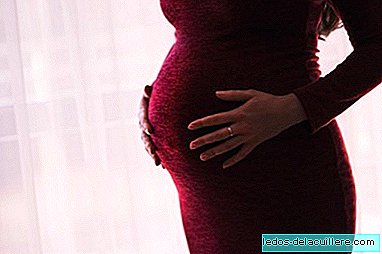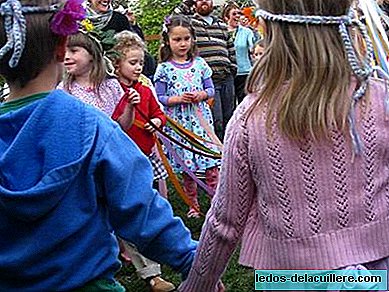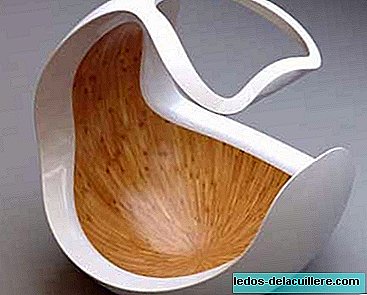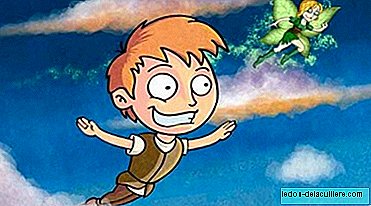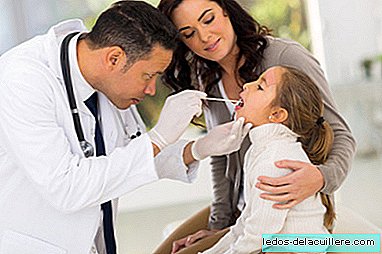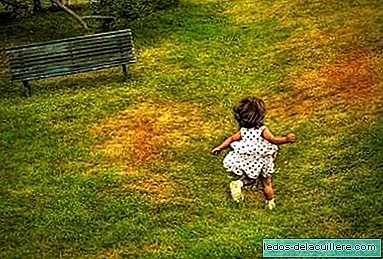
We continue with another entry dedicated to explaining what actions are evaluated at the time of detect delays in children's psychomotor development, speaking today of those belonging to children up to 24 months.
As it has been explained in each entry, for those who have not followed the thread of the previous ones, the assessment is carried out by health professionals although it is interesting that parents know the items since they are the ones who spend more time with the child.
To carry out the exam, a vertical line is drawn under the child's age and the actions that are left (including all that we have commented on previous days) and those that intersect with the line are evaluated. As the exam is done we will add the stars as explained in the entry of the Haizea-Llevant Table.
Exploration of the area of sociability
• Help pick up toys * (16; 21; 26) Exploration (E): Ask if it helps to collect toys. Positive response (RP): If you answer yes.
• Feed the dolls * (18; 26; 30) E: Ask if he plays to feed the dolls. RP: If you answer yes.
• Fulfills two orders ** (19; 22; 25) E: With available material, the child is asked to make two or more orders in a row (for example: "give me a cube", "put the ball inside the box", "turn off the light", "open the door", etc. .) RP: If of three simple orders it realizes, like minimum, two.
• Put on clothes * (22; 30; 38) E: Ask the mother if she actively participates at the time of dressing. RP: If you can put only a few pieces of clothing, even if you don't tie them well.
Language area exploration
• Use the word “No” ** (17; 20; 24) E: Observe or ask the mother if the child uses the word "no" correctly. RP: If you do or the mother or answer affirmatively.
• Points to a part of your body ** (17; 21; 24) E: Ask the child to point to a part of his body: eye, nose, mouth, hand, etc. RP: If you do it properly.
• Name a drawn object * (19; 22; 25) Material needed (M): Sheet of common objects E: Show the child the sheet and ask one by one, what is this? RP: If you name at least one object.
• Combine two words ** (21; 23; 25) E: Observe or ask the mother if the child combines two words to make a meaningful phrase such as: "I want bread", "Handsome child". RP: If it does or the mother responds affirmatively. Badly spoken words are accepted but with clear significance. For example: "mine had" instead of "look at the train".
• Uses pronouns * (22; 23; 36) E: Observe or ask the mother if the child correctly uses the pronouns me, you, mine, for me, etc. RP: If you do or answer affirmatively.
Exploration area exploration
• Cover a pen ** (16; 20; 24) M: Pen. E: Observe the child or ask the mother if she puts the cap on a pen. RP: If we see that it does or if the mother answers affirmatively to the question.
• Makes a tower with four cubes ** (17; 20; 24) M: Several cubes. E: Put several cubes in front of the child. The examiner shows you how to build a tower with four cubes. Put a cube in front of the child and, at the same time, put another cube saying: “Look… we have made a tower. Now you also make a tower. ” Several attempts are allowed. RP: If he does. The tower must be stable and stand alone.
Postural area exploration
• Go down stairs ** (18; 21; 24) E: Ask the mother if she goes down only stairs, at least three steps, even if she is holding on to the railing or leaning on the wall. RP: If the mother answers affirmatively.
• Shoot the ball when asked * (21; 22; 26) M: Ball. E: Throw the ball and ask him to kick. RP: Yes it does.
• Jump forward * (24; 31; 39) M: Ask the child to jump forward with both feet or ask the mother if she can jump off the curb or a ladder with their feet together. RP: If it does or if the mother responds affirmatively.
With everything explained to date we know all the actions that are evaluated in children up to 2 years old. In a few days we will explain the remaining items, which are what allow children up to 4 years to be examined.
Photos | Flickr ('J'), Flickr (Mark and Allegra) On Babies and more | How delays in children's psychomotor development are detected (I), How delays in children's psychomotor development are detected (II): the Haizea-Llevant Table, How delays in children's psychomotor development are detected ( III), (IV), (V) and (VI), Psychomotor development


